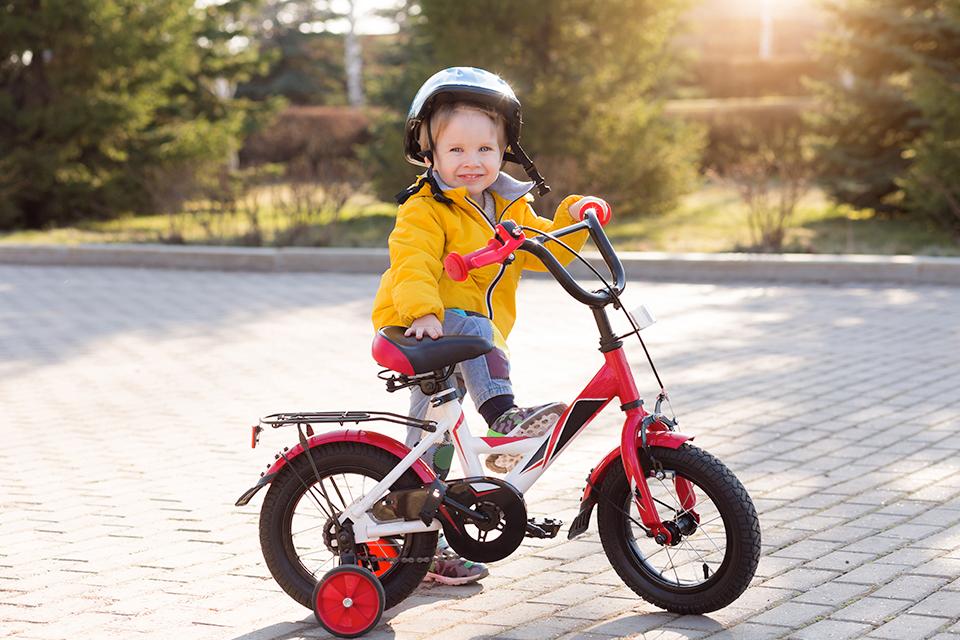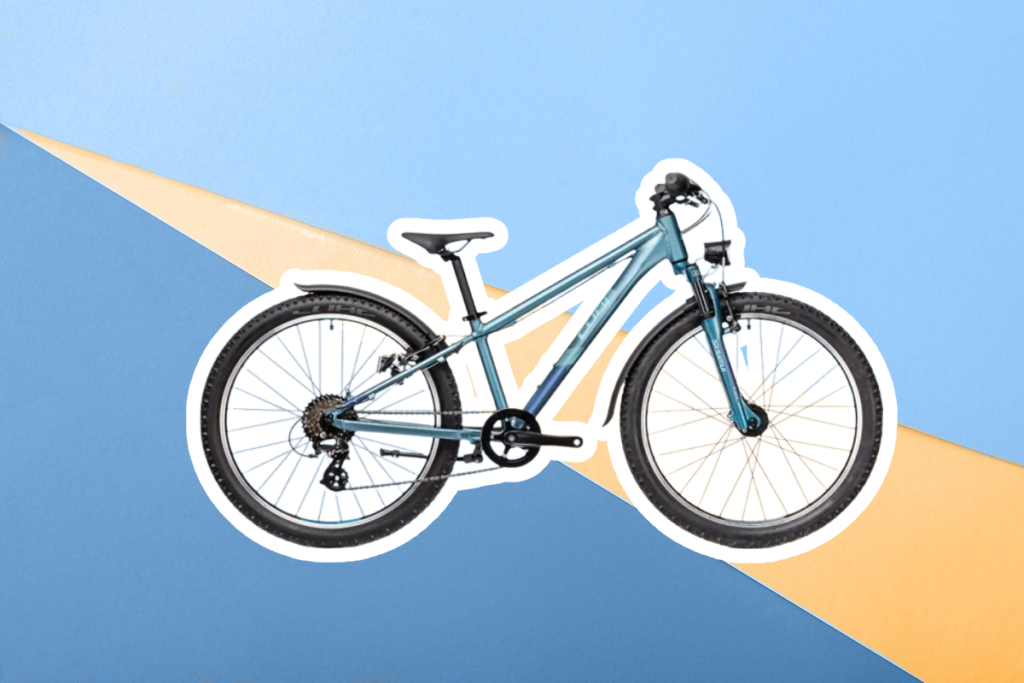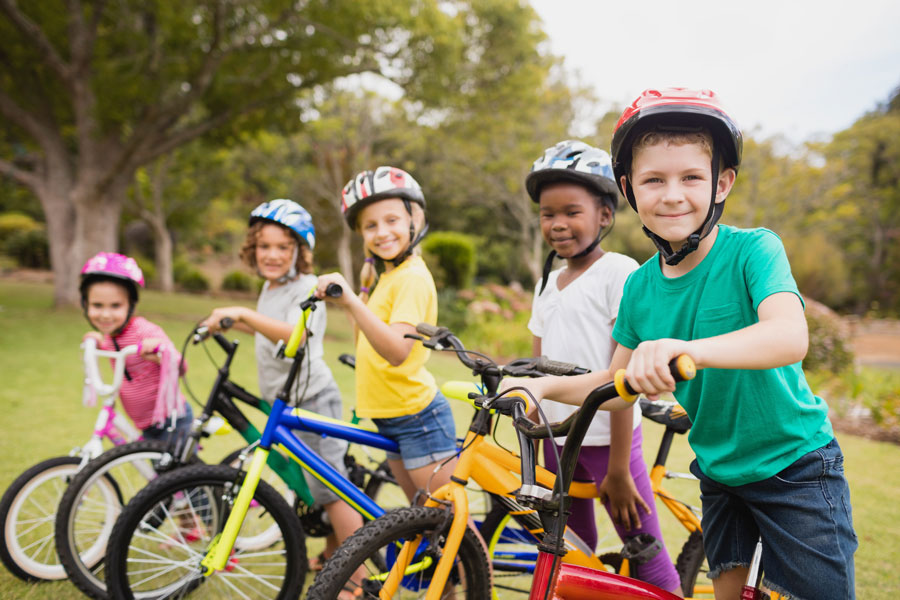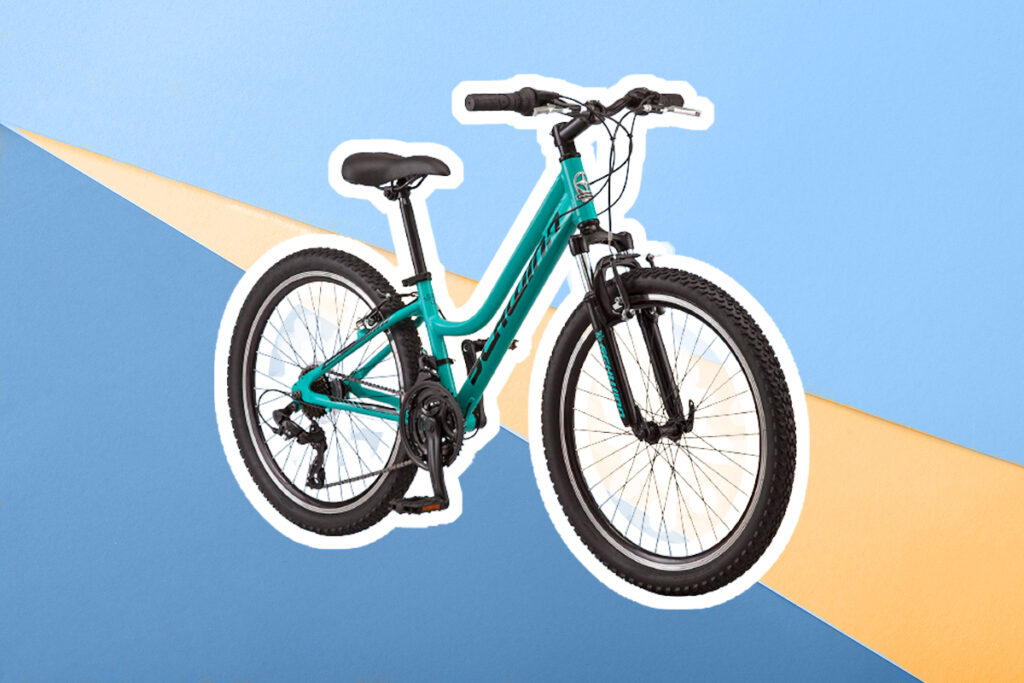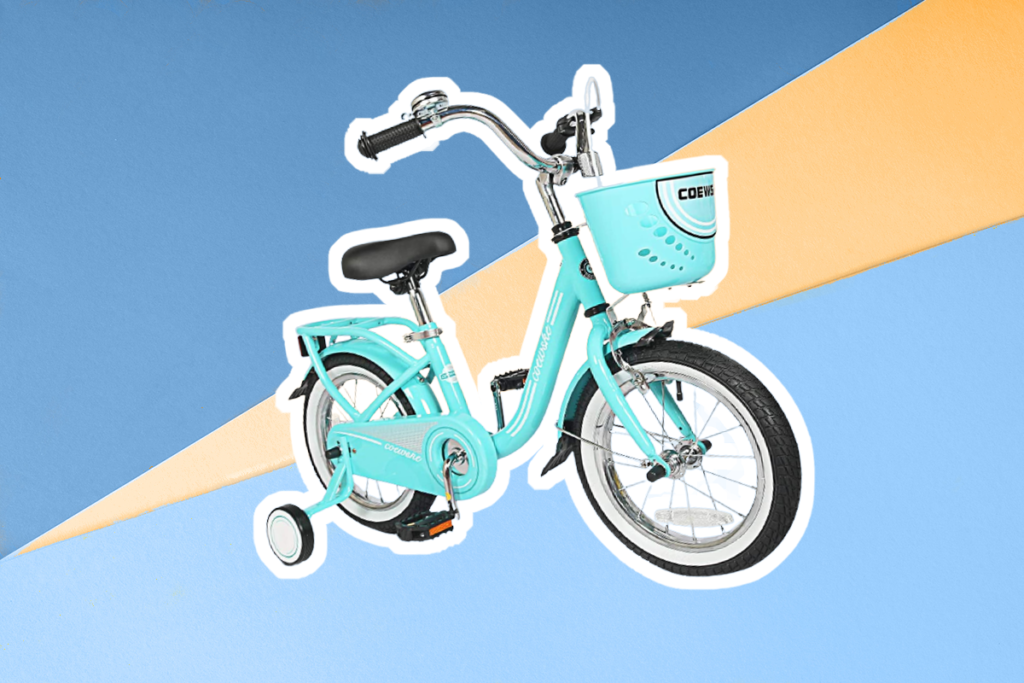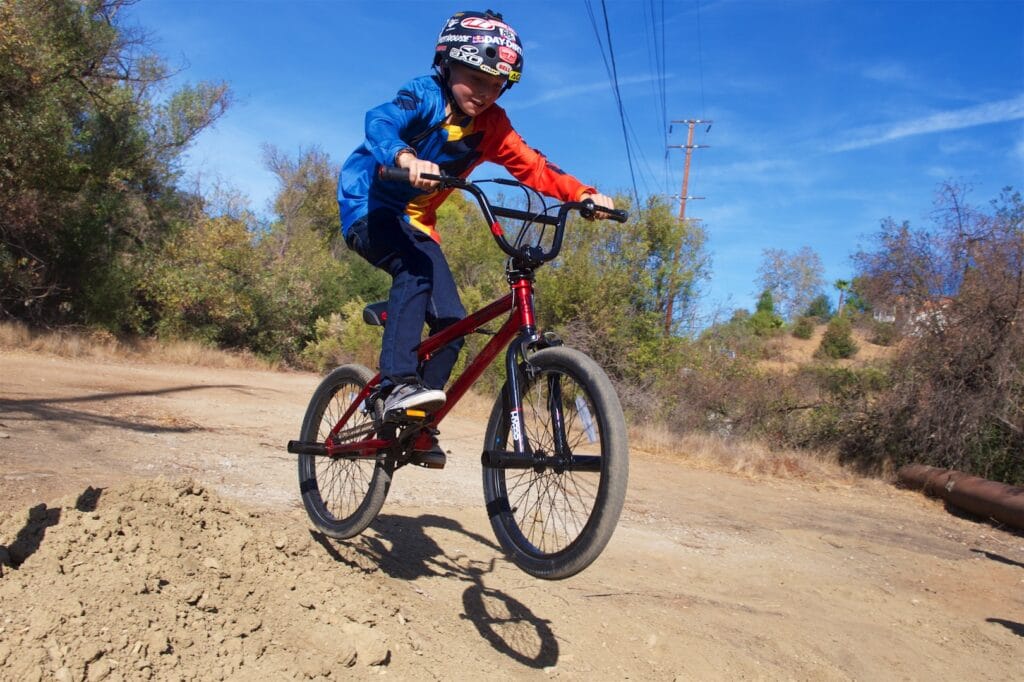- Trails
-
Bikes
-
Gear
-
Tips & Tricks
-
About us


As a parent, watching your child grow can be such a beauty to behold. And it’s even more amazing when you witness their transition from crawling to learning how to ride a bike. Indeed, teaching your little one how to ride a bike is a bonding moment for both you and your kid and a fun milestone for your kid.
It feels so good knowing that you are playing a vital role in helping your kid acquire a skill that will help them improve their bravery, decision-making, and motor skills. Truth be told, every kid struggles when riding a bike for the first time. However, they feel more confident and determined when they know you are with them every step of the way, guiding them and celebrating their little wins until they finally get the hang of bike riding Trusted Source Biking - HealthyChildren.org Biking is a fun way for children of all ages to get active and stay fit. Most children learn to ride a tricycle at around 3 years of age. Between 4 and 7 years of age most children learn to ride a bike. However, remember that each child is different and will learn to ride a bike at his or her own pace. www.healthychildren.org .
When it comes to choosing a bike for your kid, one of the major decisions you have to make is opting for either balance bike or bike with training wheels for your 4-year-old or any other age group. In this article, we will let you know what’s better in a balance bike vs training wheels comparison. Let’s get started.
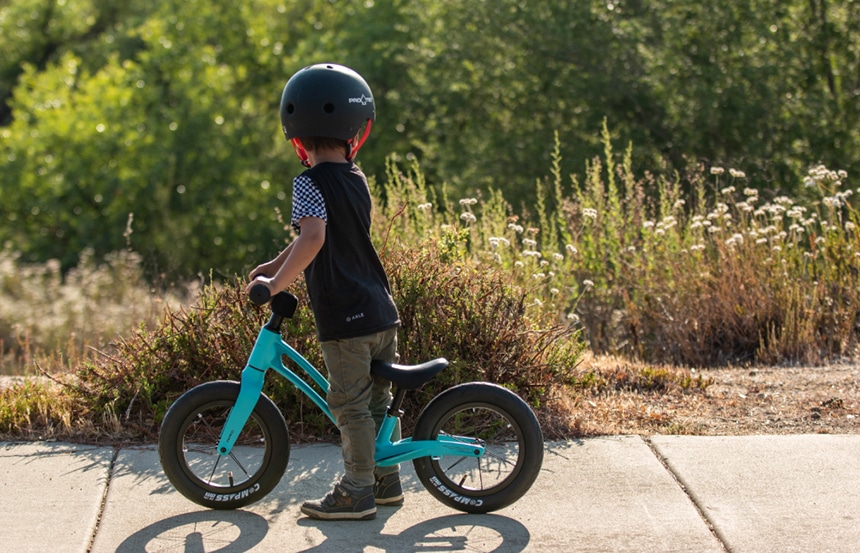
These bikes have no freewheel, no derailleurs Trusted Source Shop Tip- How to Select A Front Derailleur – Community Cycling Center If the derailleur is bent or the cage is cracked, it will not be able to move the chain from one chainring to another easily or at all. Be sure to inspect your derailleur for damage before installing it and each time you want to adjust it. communitycyclingcenter.org , no gear shifters, no gears, no chains, no drivetrain, and no foot pedals. But there’s more you need to know about balance bikes before opting for them as the best option for your kid. Do balance bikes work? To find the answer to this question, we have split the information into different segments below, making it easy for you to understand balance bikes better. Take a look!
The first thing you will notice on a balance bike is its lack of pedals. While this might sound like a downside and a reason why balance bikes are bad, it is not.
If your kid learns to ride using a balance bike, you can be sure that they will quickly develop balance on bikes. This is because they have to push off the ground with their feet to move the bike and maintain stability while it is in motion.
Normally, kids learn to walk while maintaining a sitting posture on the saddle first. Then, they move on to running, followed by gliding with their feet away from the ground.
Once they can coast along with their feet off the ground, it means one thing — they have gained mastery of balance. At this point, they can go ahead to learn pedaling at their pace.
The truth is, learning how to pedal is much easier than learning how to balance. So, they should develop the most difficult skill (balancing) first before moving to the less difficult skill (pedaling).
A balance bike’s simplicity, lack of stabilizers, low center of gravity, and low weight means cornering will be easy and thrilling for your little angel.
With a balance bike, your kid can ride on most surfaces, including slopy surfaces, with ease. It gets even much better when this bike comes with one or both brakes, as it makes controlling on inclines more convenient.
Seeing that these bikes can go almost everywhere, they are the best option to consider if you want to boost your kid’s adventurous spirit.
A typical balance bike is made out of plastic, steel, wood, or aluminum. However, aluminum is the best of the bunch, as it offers durability, strength, and perfect weight balance.
The simplicity of a balance bike design makes it lighter than a bike with training wheels. Furthermore, balance bikes are easier to ride and convenient for you to carry when your kid is done with biking for the day.
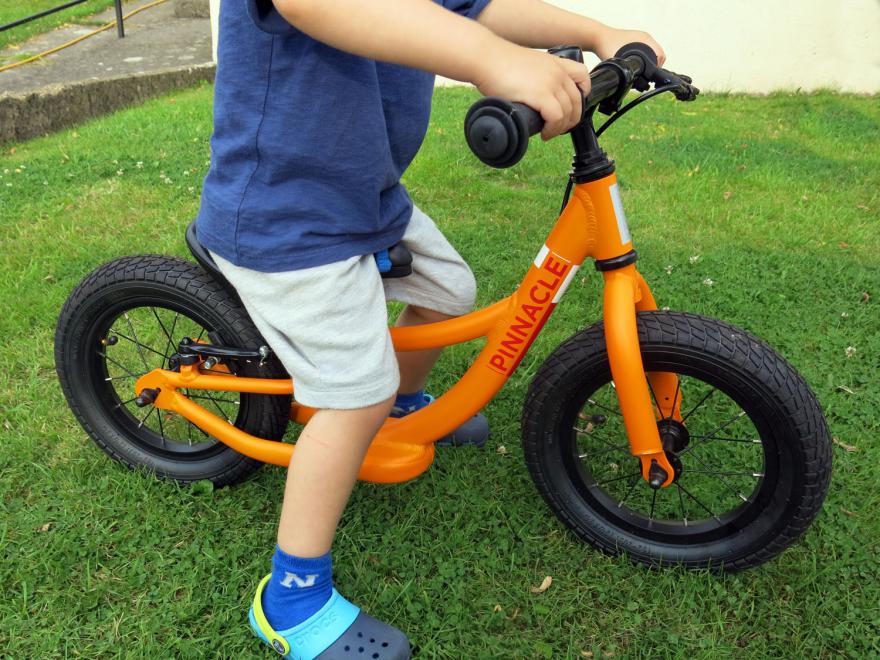
EVA foam tires are known to be lightweight and puncture-proof. But they do not offer adequate grip and wear out easily. Moreover, you can’t paint tires when they wear out. On the other hand, rubber tires have air tubes and offer better grip and more cushioning, which is vital when your kid is turning bends or corners. It is best to decide from these two types of tires for your bicycle balance wheels.
The saddle height on every balance bike is normally low. It is designed this way to allow your kid to place their feet firmly on the ground, allowing them to run or walk without any difficulty.
There are a variety of brakes for balance bikes in the market. For instance, you will find a few balance bikes without brakes. However, it is worth noting that this type of balance bike can ruin your kid’s shoe.
You will also find many balance bikes with only rear brakes. And a handful with both rear and front brakes.
If you would love to keep your little one safe and make it easy for them to stop swiftly when riding, you should ensure that the bike has at least one brake or both brakes (if possible).
Bikes Trusted Source Learning to Cycle: Are Physical Activity and Birth Order Related to the Age of Learning How to Ride a Bicycle? The amount of physical activity that children do is related with their learning age for cycling. Children whose parents report partaking in daily physical activity learn, on average, 1.8 years earlier than those whose parents report exercising less than twice a month. It is possible that physical activity affords better balance, coordination, muscular fitness, and perceived competence, accelerating the learning age for independent cycling. www.ncbi.nlm.nih.gov with training wheels, otherwise known as kids pedal bikes with stabilizers, are the old-fashioned kid bikes that have chains, pedals, cranks, rear, and front brakes. These bikes help your little one learn to pedal and stay upright on a bike with the support of stabilizers or training wheels. The stabilizers are later removed. After which, your kid has to learn to balance and pedal simultaneously.
Are training wheels bad or not? The information below will help you understand bikes with no training wheels better. After reading this, you can decide whether to purchase or steer clear of these bikes. Check it out!
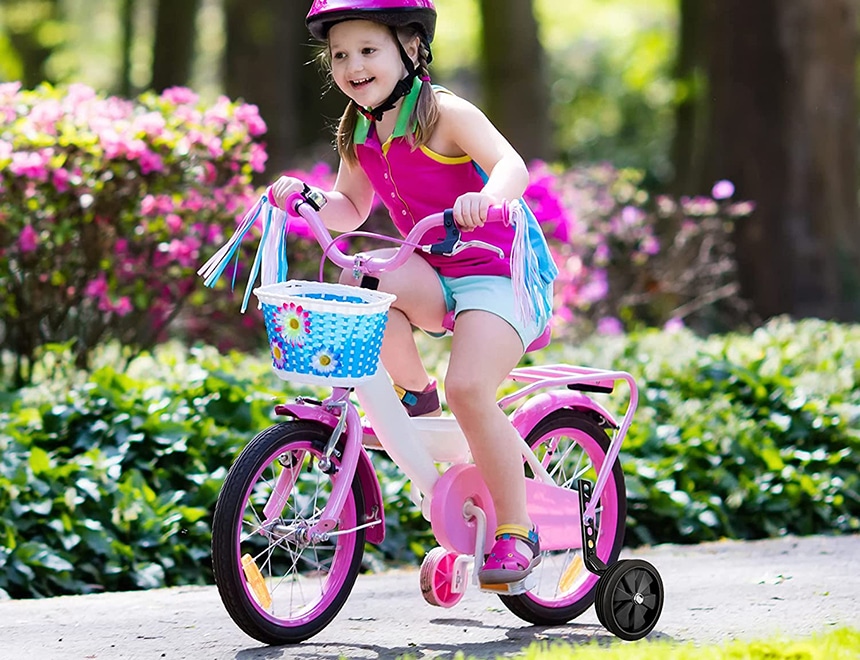
According to expert reviews, the ideal axle kit must offer smooth transmission to transfer motion in the bike wheels. Thanks to its solid drive train, the BBR Heavy Duty Axle kit is the most reliable option out there.
If your kid learns to ride using bikes with training wheels, they will struggle to develop their balance because the stabilizers ensure the bike stays upright.
Immediately the stabilizers are taken off, and your child would need to learn the challenging skill (balancing) and unlearn bad habits acquired from the use of stabilizers.
It’s normal for a bike to lean when steering around corners. But the case is different when it comes to bikes with training wheels. Here, leaning is more difficult because of the stabilizers or training wheels that keep the bike upright. As a matter of fact, there is a high possibility that your kid will learn to lean the wrong way when using these bikes.
Bikes with training wheels are not best suited for inclined slopes because they will always topple over to the sides. In addition, these bikes can’t dig into soft ground or roll over rough surfaces, leading to slow and frustrating movement.
A large percentage of bikes with training wheels are made out of heavy steel. Only a handful of manufacturers use aluminum when designing these bikes. Once a bike is heavy, pedaling and maneuvering become difficult. And what’s worse, the presence of the stabilizers on these bikes makes them even weightier.
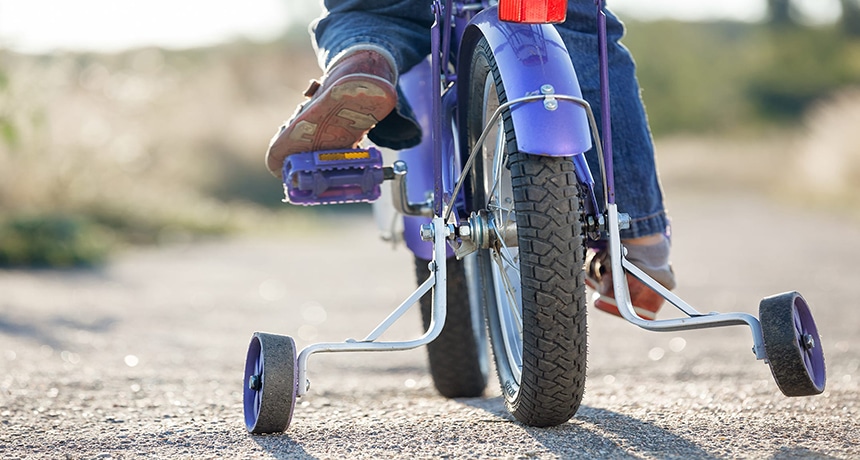
It is almost certain that every bike with training wheels you come across will have rubber tires that provide grip to the rear wheel designed for pedaling. They are also equipped with little stabilizer wheels that are made of hard plastic.
The saddle in bikes with training wheels is always high. This makes pedaling easy for your little one. In this case, your child is afforded the freedom to stretch their leg, reaching near the underneath of the pedal stroke.
If you observe your kid when they are riding bikes with training wheels, you will notice they can only make contact with the ground using their tiptoes when they sit on the saddle due to its height.
Also, the saddle in bikes with training wheels is placed higher than those on a balance bike to create sufficient clearance that prevents the pedals from hitting the ground.
Bikes with training wheels come with both rear and front brakes. In countries like the United States of America, every rear brake in any bike with training wheels must be a back pedal (coaster) brake. However, in some countries, the tables turn differently, as the use of a side-pull brake or V-brake is permissible.
Yes, you can. All you have to do is remove the chains, pedals, and cranks, and you are good to go. That said, it is worth mentioning that bikes with training wheels are usually higher than balance bikes due to the need for ground clearance that prevents the pedals from hitting the ground while riding.
This implies that the saddle is pretty high, so if you decide to remove the pedals, it will be too high for your kid, as their legs won’t be able to touch the ground. Additionally, dismantling and assembling the cranks, pedals, and chains in a bike with training wheels can be a herculean task if you do not possess the right tools or the much-needed skills.
Based on most reviews, the perfect bicycle model for kids must prevent them from losing balance and be children-friendly. And Micargi Boy’s Jakster BMX fits the bill, thanks to its child-friendly coaster brakes and grip on all kinds of terrains.
It’s intuitive to ask the opposite: can you put training wheels on a balance bike? The idea of purchasing a balance bike does not make sense if training wheels are added to it. The purpose of the balance bike is to teach children how to balance (without training wheels), after which they may move on to a bike and learn pedaling.
No doubt, it is always exciting seeing your child on any kind of bike, whether bikes with training wheels or balance bikes. But it gets even better when you see them zoom along on a perfect-sized bike without any need for your assistance. Is a balance bike better than training wheels? In a nutshell, you can choose to purchase a bike with training wheels for your kid, and that’s fine. However, if you would love to see them quickly riding independently, balancing elegantly, and pedaling graciously, you should opt for a balance bike.
So far, we have been able to clear the air on the balance bike vs. training wheels debate by listing the benefits of balance bike vs training wheels for toddlers and other age groups, so it’s up to you to do what’s best for your kid. Before allowing your kid to ride a bike, don’t forget to wear a helmet. Also, ensure that the spokes are tightened. Remember, your little one’s safety should always come first, even as they try to learn the ropes and strive to become improved bike riders.
